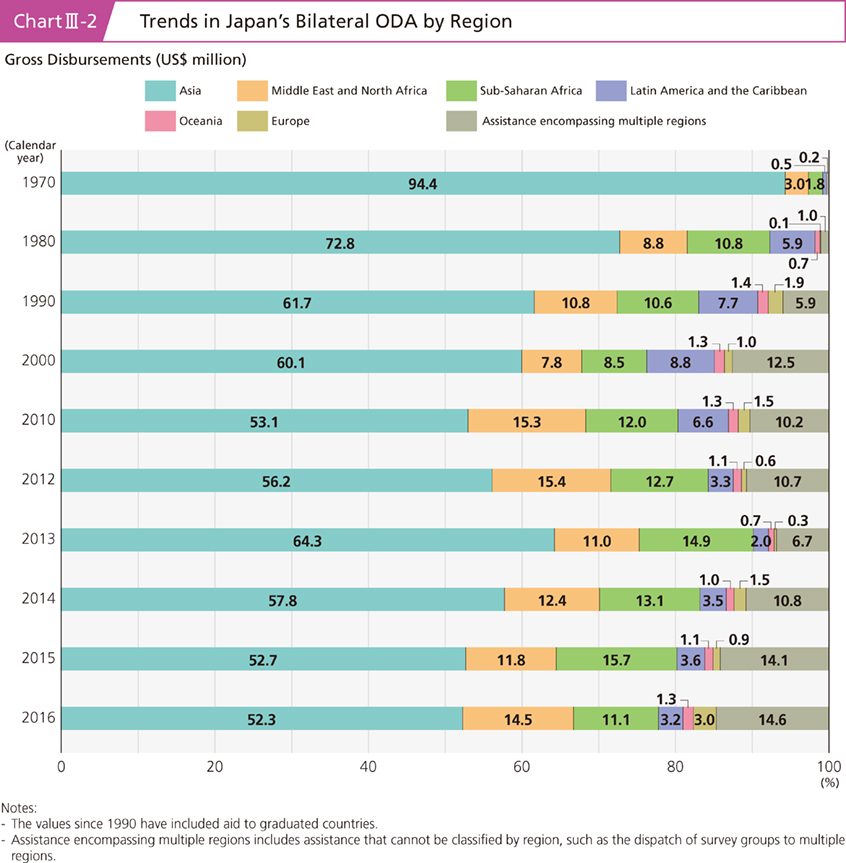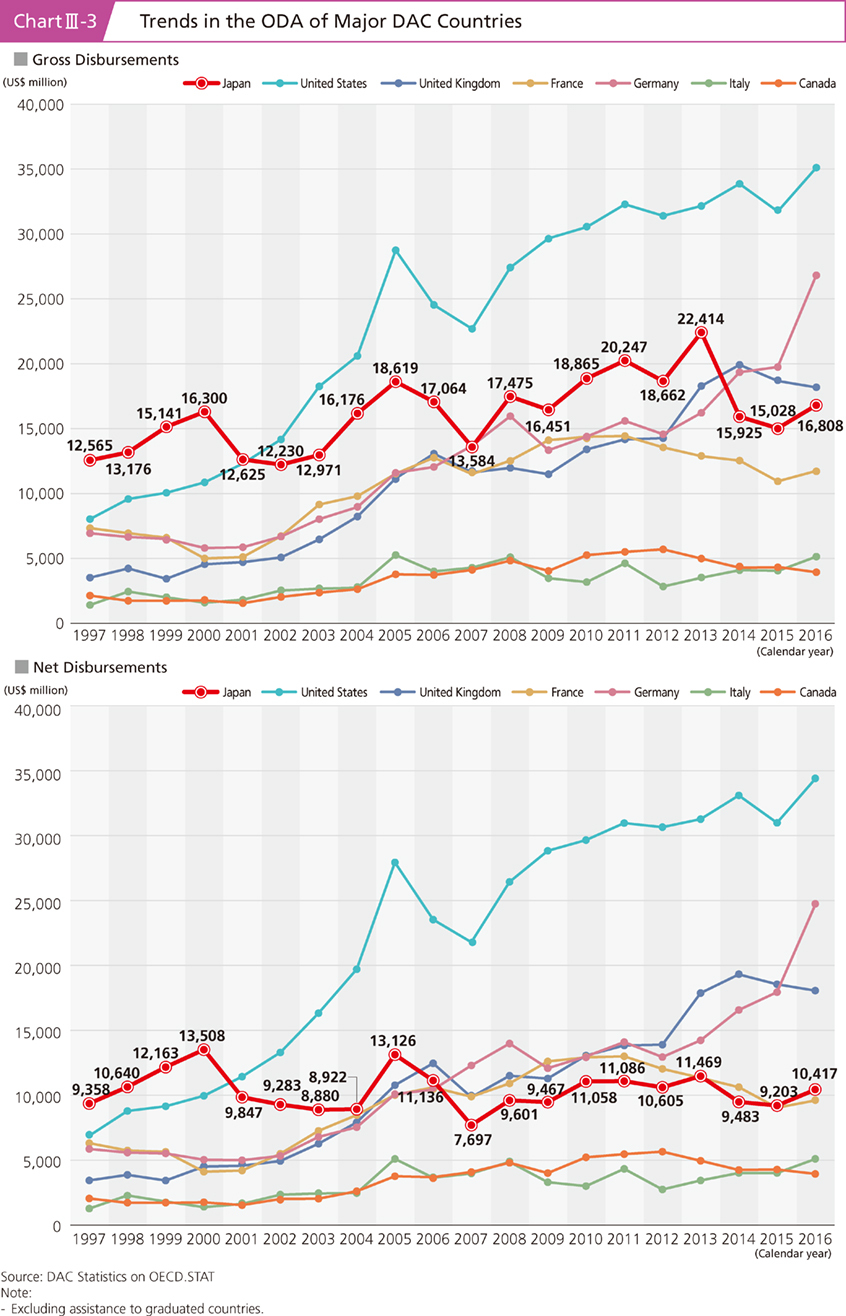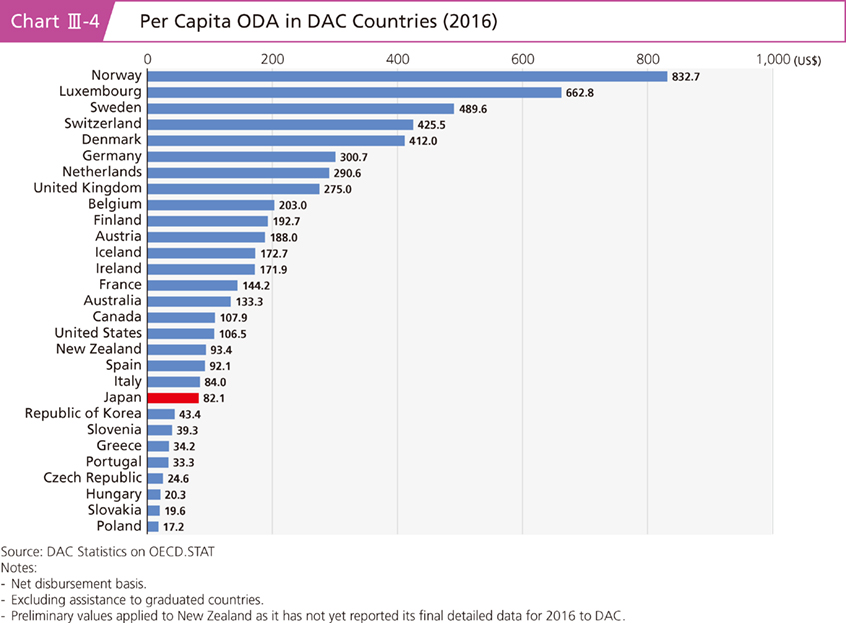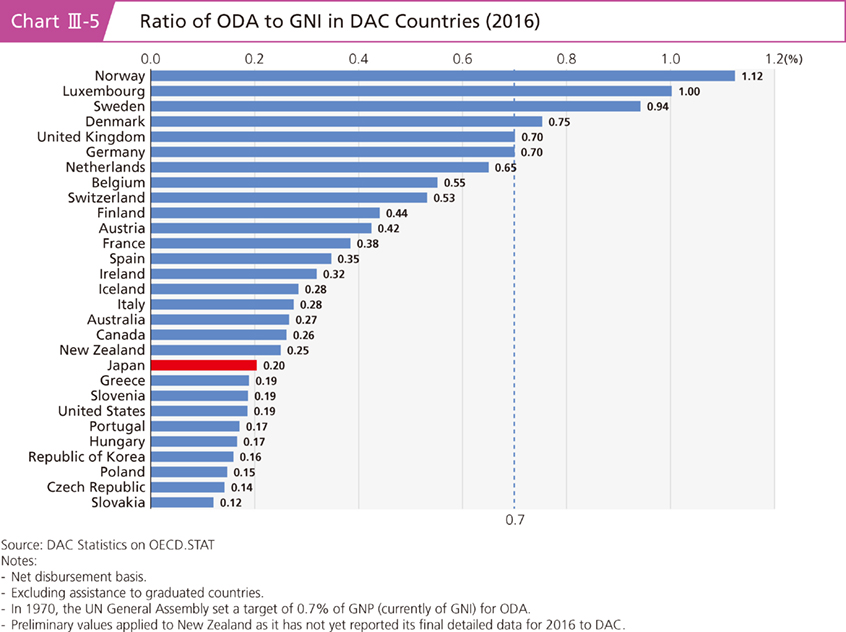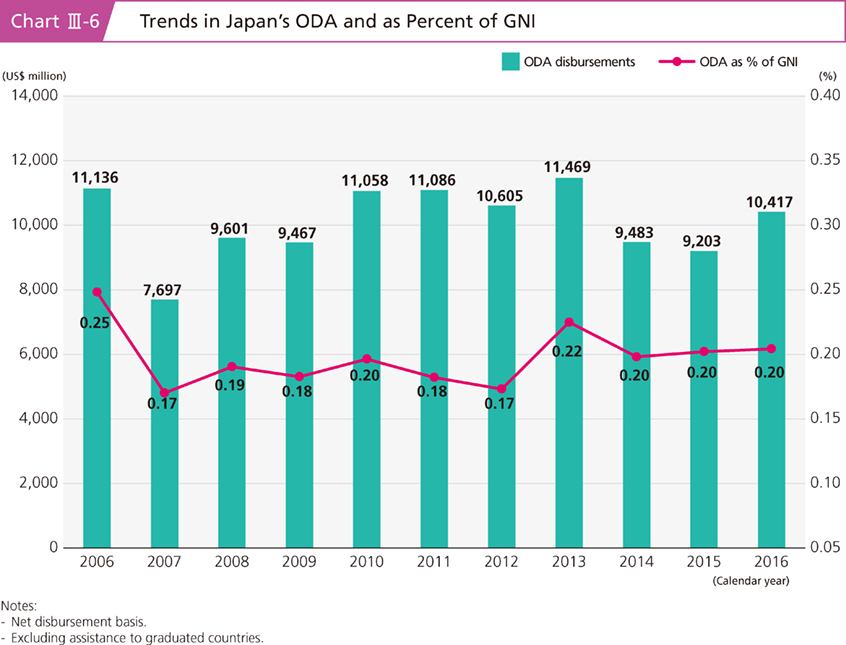Part III Development Cooperation in 2017
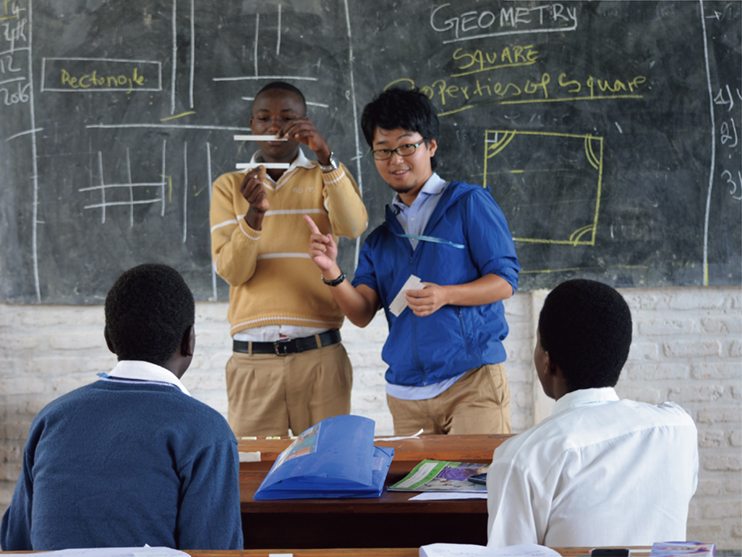
A Japan Overseas Cooperation Volunteer, Mr. Kazuki Miura, conducting lessons at the Muhanga Teacher Training Center in Muhanga District, in Southern Province of Rwanda (Photo: Maki Miura)
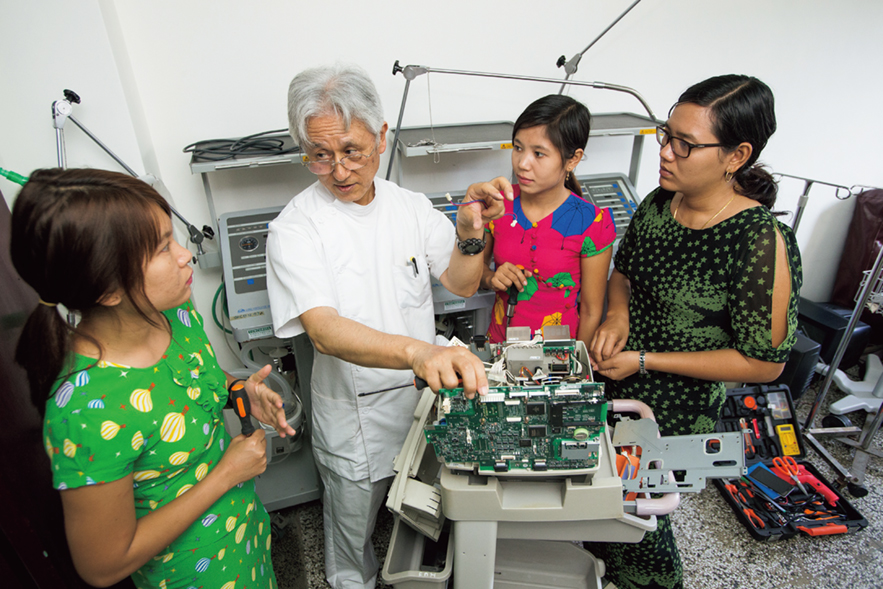
Senior Volunteer, Mr. Kyuzo Iwai providing support in the building of a system for the maintenance and management of medical equipment at the New Yangon General Hospital in Myanmar. Understanding of the structure is enhanced as he disassembles the equipment together with the personnel involved. (Photo: Shinichi Kuno / JICA)
Chapter 1 Japan's Official Development Assistance in Terms of Disbursement
In 2016, Japan's gross ODA disbursements amounted to approximately $16,807.79 million (¥1,828.7 billion) while its net ODA disbursements, which are gross disbursements minus repayment amounts of loan aid,(Note 1) amounted to approximately $10,416.80 million (¥1,133.4 billion), ranking Japan fourth in the world for both gross and net ODA disbursements.(Note 2)
<Disbursement Analysis>
Japan's 2016 gross disbursements on a dollar basis of ODA increased by approximately 11.8% over the previous year (2015). Japan ranked in fourth place among the member countries of the Development Assistance Committee (DAC) of the Organisation for Economic Co-operation and Development (OECD), behind the United States, Germany, and the United Kingdom. In net disbursements on a dollar basis, which also increased by approximately 13.2%, Japan ranked fourth behind the United States, the United Kingdom, and Germany (same ranking for both gross and net disbursements as in the previous year).
ODA disbursements on a yen basis have remained at large the same level as in the previous year, with a 0.6% increase in gross disbursements and 1.8% increase in net disbursements, but due to exchange rate movement towards appreciation of the yen against the U.S. dollar, both gross and net disbursements on a dollar basis increased by more than 10% in comparison to the previous year.
A breakdown of 2016 disbursements shows that in terms of gross disbursements, bilateral ODA accounted for approximately 80.0% of overall disbursements, while ODA towards international organizations accounted for approximately 20.0%, and in terms of net disbursements, bilateral ODA accounted for approximately 67.7% of overall disbursements, while ODA towards international organizations accounted for approximately 32.3%. Bilateral ODA is expected to contribute to the strengthening of Japan's relations with recipient countries. Meanwhile, ODA towards international organizations enables Japan to support international organizations which have expertise and political neutrality while ensuring the “visibility of Japan,” and thereby, enables us to support countries and regions where direct assistance from the Government of Japan is difficult to reach. Japan is making every effort to ensure that its aid is provided properly, coordinating both aid types and making flexible use of aid.
Grant aid refers to cooperation that provides grants to the government or other entities in developing regions, for the main purpose of the development of those regions. Grant aid enables prompt and flexible responses to the needs of developing countries and of the international community after large-scale disasters and other events, and achieves a significant policy effect through which the stability of the international community can be secured and Japan can exercise leadership. Technical cooperation refers to cooperation that makes use of Japan's know-how, technologies, and experience to train human resources who will become the drivers of socio-economic development in developing regions. This scheme is useful for enhancing developing countries' technology as well as establishing and improving institutions and organizations. Furthermore, since technical cooperation is a form of aid which is materialized through human interaction and based on people-to-people exchanges, it plays a major role in achieving mutual understanding at the individual level in both countries. ODA loans such as government loans are suitable for providing large-scale assistance, and effective in supporting projects, including infrastructure development. ODA loans are essential for the socio-economic development of developing regions.
Examined by the above aid schemes, the disbursement for bilateral ODA calculated as grant aid totaled approximately $2,806.95 million (¥305.4 billion), or approximately 16.7% of the total ODA gross disbursement. Among these grants, grant aid through international organizations accounted for approximately $1,598.82 million (¥174.0 billion), or approximately 9.5% of the total. Technical cooperation accounted for approximately $2,775.70 million (¥302.0 billion), or approximately 16.5% of the total. In terms of government loan, loan disbursements accounted for approximately $7,856.80 million (¥854.8 billion), or approximately 46.7% of the total gross disbursements of ODA. Net disbursements, which are loan disbursements from which repayment amounts are subtracted, accounted for approximately $1,465.81 million (¥159.5 billion).
- Note 1: Gross and net disbursements are differentiated as follows:
Net disbursements = gross disbursements – amount recovered (repayment amounts of government loans from recipient countries to donor countries)
Net disbursements are usually used in international comparisons of aid disbursements. - Note 2: Excluding disbursements to graduated countries. For more information regarding disbursements that include graduated countries, see Chart IV-13.
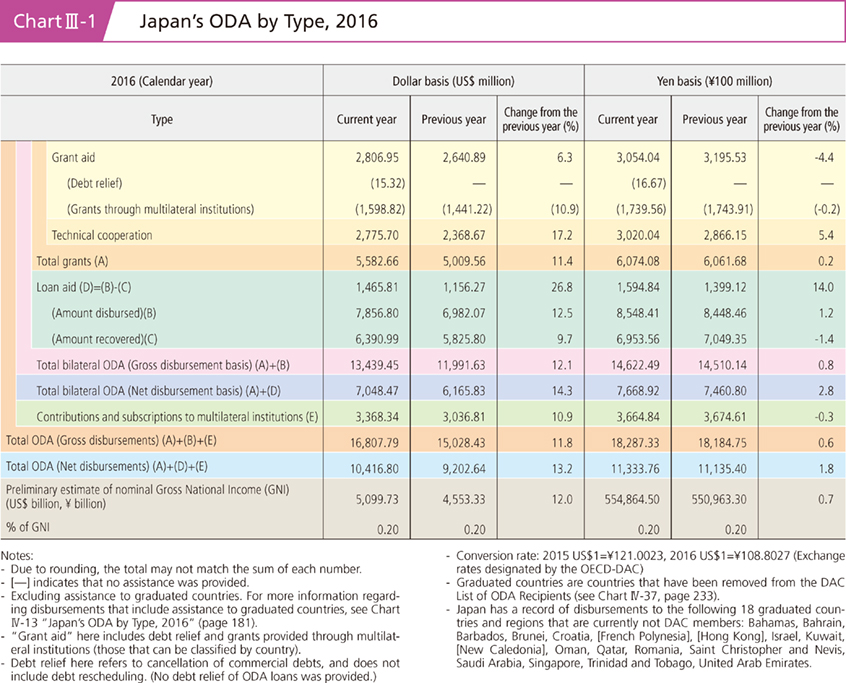
Japan's bilateral ODA by region is as follows in the order of gross disbursement, net disbursements and percentage of total disbursements
(The following disbursements include disbursements to graduated countries.)
♦Asia: $7,037.79 million ($1,787.61 million) (52.3%)
♦Middle East and North Africa: $1,944.69 million ($1,287.86 million) (14.5%)
♦Sub-Saharan Africa: $1,490.07 million ($1,388.68 million) (11.1%)
♦Latin America and the Caribbean: $428.94 million ($82.39 million) (3.2%)
♦Oceania: $180.77 million ($162.97 million) (1.3%)
♦Europe: $402.06 million ($336.06 million) (3.0%)
♦Assistance covering multiple regions: $1,966.44 million ($1,966.44 million) (14.6%)
